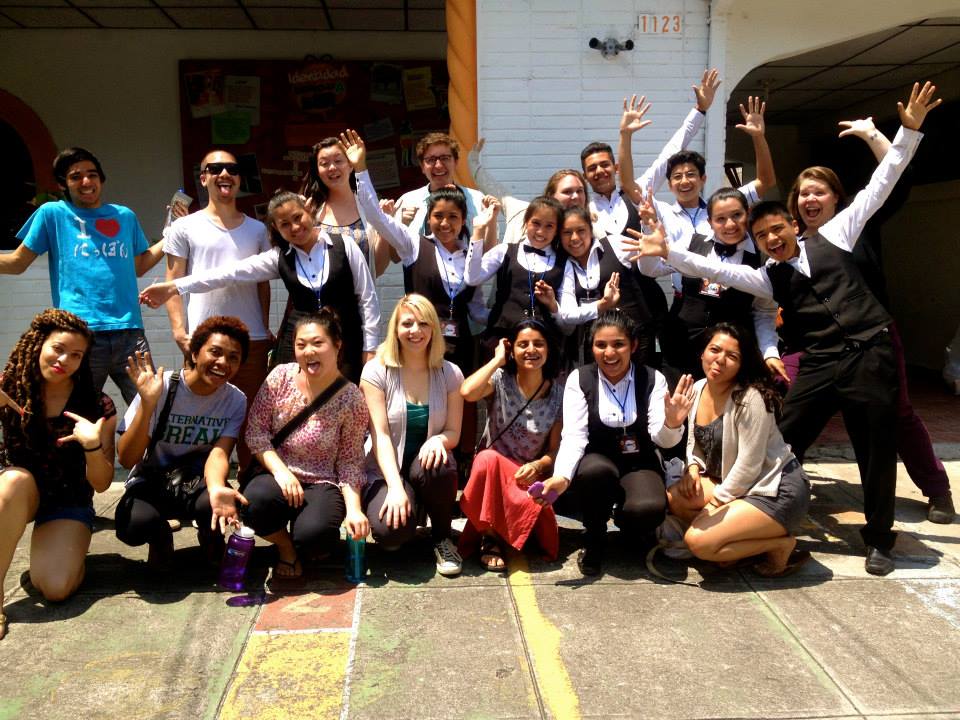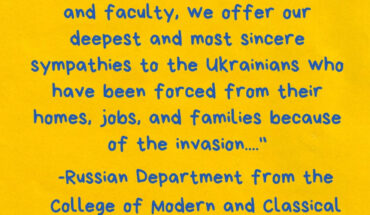This story was originally published in the March 30 edition of Fourth Estate.
Taylor Wichtendahl, staff writer
While many Mason students went on vacation, spent time with family, or worked over break, some students used the week to volunteer in the United States and abroad.
Students traveled through Mason alternative spring break, offered through New Century College and Social Action and Integrative Learning.
Patty Mathison, the associate director of SAIL, emphasized that the goal of these trips was to work together and for students to understand social issues.
“We do this through a community asset based approach where we are not going in to ‘help’ a community, but rather to work together towards positive social change,” Mathison said. “It is an opportunity for students to see firsthand what organizations and people are doing to address these various social issues.”
The students who went on these trips earlier this month speak to this aspect through their experiences.
“It was so amazing to connect with people my age in El Salvador who were leading the charge on issues we were both passionate about,” Michael Galfetti, who is studying government and international politics, said.
Galfetti went to San Salvador, El Salvador, where the group focused on human rights issues, specifically women’s rights.
The students worked with “Las 17,” a group that is attempting to free 17 El Salvadorian women imprisoned for having a miscarriage.
They also met with a small community in Nahuizalco to talk about the massacre of their people that first occurred in 1932, El Salvadorian high school students who were working on teaching others about discrimination, and sex workers demanding their rights.
Galfetti also had the chance to meet with young leaders throughout El Salvador.
He described them as social rights activists and dreamers saying, “…they were as young as me standing up and making change and being an example for others. It gave me a lot of hope for the country.”
Matthew Moore, who went through Alternative Spring Break studied in Washington DC. The focus of his trip was on HIV/AIDS and the homeless population.
The students visited Women’s Collective, an organization that helps women that have AIDS/HIV or are at risk, in the DC Metro area. They also worked with Food and Friends, an organization that provides food to those who have illness and are home bound.
Moore was drawn to Alternative Spring Break because of the opportunity to serve others without a large expense. He feels the experience really humbled him through speaking with at risk individuals.
“Sometimes just having a conversation with these people is something positive they can hold on to when they are surrounded by so much hardship,” Moore said.
There are opportunities for students to attend alternative spring break next year. Mathison explained that student cost is kept low so that students are not held back from participating. Cost ranges, not including flights, from $200 for a local D.C. trip to $600 for the El Salvador trip. Students have stayed with host families, camped out, and have even stayed in a church during these trips. Scholarships are also an option.
The goal of SAIL is to create long term partnerships with the communities where they go so they can continue to send students there each year. Next year, a new trip will be coming to the program. Students will visit Selma, Alabama to focus on Youth and Civil Rights.
All experiences on the trip are student led. While faculty is aboard for support and as a resource, the student leaders of the trip run pre-trip meetings and work closely with local community partners.
Another student, Ahmed Cherakoui, went through a class and not the Alternative Spring Break program. Ahmed spent time in Pachuca, Hidalgo, Mexico over break. The main goal of the trip and the partnership with another school Tec de Monterrey, was to take an unsuccessful startup company in Mexico and change the business model to improve the company.
With Cherakoui ’s interest in International Business, the alternative spring break trip was a no-brainer. Cherakoui was “able to see the global economy from a new lens and take on a more analytical approach to resolving the conflicts that an entrepreneur faces.”
The trip provided him with experience on an academic and practical level, while simultaneously providing him with exposure to a new culture. These two thread into each other, as Cherakoui puts it because, “In order to be successful in a global environment one must understand and value the culture of those they are working with.” Cherakoui felt the trip taught some lasting lessons, particularly that the differences and similarities between Mexican culture and our culture are what unite us.
The students who have been on these trips encouraged other Mason students to take advantage of the program.
“It is an eye-opening experience that really changes you and deepens your understanding and appreciation for people,” Galfetti said.
According to Mathison, many of their trip leaders have continued their community engagement careers through Teach for America, Americorps, and the Peace Corps. She said many students return for another trip, as it is, “truly a transformational experience focused on community through an asset based approach.”





